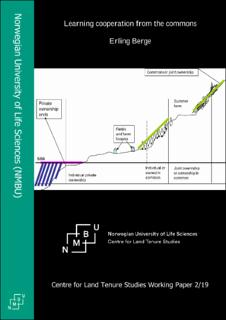Resource information
The paper discusses the link between commons as they might have been used in
prehistoric Norway and the rules concerning the exploitation of the commons as
found in the oldest known legislation for regions of Norway, Gulating Law and
Frostating Law. One clear social dilemma has been identified: the setting of a
common date for moving animals from the home fields up to the summer farms
and home again in the fall. The problem was obvious and the solution not
particularly difficult to institute. Many more problems were of course present,
but they did not rise to the level of a social dilemma. All such problems were
managed by the rules enacted by the bygdeting along with other problems of a
community. In particular the process of inheritance, the problems of fencing,
how to change borders between neighbours and between individually owned
fields and the commons, were treated by extensive rules. The bygdeting
managed such issues from prehistory until the 16th and 17th centuries when
reforms initiated by the Danish-Norwegian kings started to take effect, making
the rule-of-law more uniquely a task for the central authorities and of less
concern for the local communities. Maybe the basic legacy of the long history
of local rule was a strong belief in the court system, that it would secure the old
saying: "By law the land shall be built, not with unlaw wasted".


